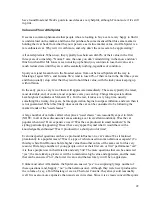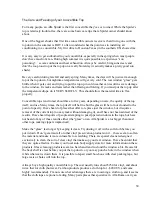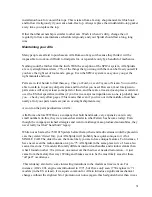
25
American manufacturers produced very basic cars that were available with, by European
standards, a fantastic number of options. It was not uncommon to have well over four dozen
different options for any given model of car, from trim to engine to body appearance (this is not
to imply that Europeans, or any other national group in the world, do not have hot rod traditions
of their own. It just seems that Americans were first, and as a result have the most deeply
ingrained habits).
What this resulted in was a very large number of cars that had the potential to become very high
performers, if the owner knew the right people, had the right skills, and possessed the right parts
catalogues. It was not uncommon at all for an owner to buy, say, a Chevy Nova (a basic
passenger sedan of the early 1970s), take it home and replace the exhaust system, the induction
system, the shifter, the rear end, the springs, the shocks, the tires, and the wheels and end up with
a car that performed a lot better than when the owner brought it home.
The reader should note that all of these
”
enhancements
„
are basically bolt-on
you really don
“
t
have to remove much or take anything apart to do the stuff listed. Finally, to this day most
American performance cars are basically hopped up family sedans, with all the handicaps to
performance that a family sedan has designed into it.
This hot-rod tradition is so strong that even today, when American manufacturers are doing most
of the
”
bolt on
„
stuff in the factory, and the cars are so computerized that any user modifications
are difficult, we try to hop the cars up with computer chips, massive tires and wheels, and
anything else we can get our hands on.
It is from this tradition (some would say handicap) that many first-time Alfa Spider buyers come
from in America. It explains a lot of why many of us end up trying to do to things to these cars.
Alfa Spiders (and just about any performance European car) simply aren
“
t built this way. These
cars were created from the outset to be high performance machines. Because of this, they are
much more
”
of a piece
„
than anything Americans came up with for decades. For the most part,
this is a Good Thing.
Since the cars had high performance
”
designed in
„
, as it were, they incorporate features that an
average owner would never be able to add on at a later date. One only has to look at the rear
drivetrain of any Alfa Spider to see this
”
take-no-prisoners
„
approach. There
“
s a multi-piece
driveshaft, integral
”
traction bars
„
, weird looking cloth travel limit straps wrapped around the
axle, a strange
”
T
„
device bolted to the top of the axle, and a robust axle assembly with a center
cast from aluminum and disk brakes on the ends. This is totally alien to your typical American
speed shop crowd used to working on Ford Mustangs and Chevy pickup trucks.
Americans are also used to American car makers and their very conservative suspension choices
and setups. Compared to what most European and Asian countries put their drivers through to get
a license, average American drivers are a so under-educated they are actively dangerous when on
the road. American car manufacturers have historically compensated for this by making their cars
forgiving to the point of total unresponsiveness.
















































